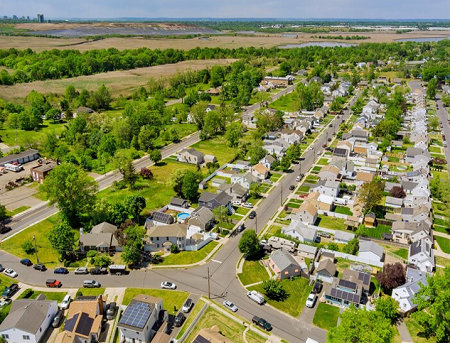Key Safety Features to Look for in a New Neighborhood
 Moving into a new neighborhood is an exciting step towards building the life you want. When you are looking for a neighborhood, you should be very careful, especially when checking the safety features in that area. While features like a great kitchen or good schools nearby might be the priority, security comes first.
Moving into a new neighborhood is an exciting step towards building the life you want. When you are looking for a neighborhood, you should be very careful, especially when checking the safety features in that area. While features like a great kitchen or good schools nearby might be the priority, security comes first.
However, safety involves more than just looking at crime rates on a website. In this blog, we will discuss some of the key safety features you should check for when choosing the safest neighborhood to live in.
Visible Police and Emergency Services Presence
A visible police presence can serve as a powerful deterrent to crime. Neighborhoods with regular patrols, community outreach officers, and a strong partnership between residents and local law enforcement will be more secure. In addition to local police, consider the closeness of emergency services in the neighborhood. Check if you can reach the hospital quickly when medical care is needed and whether fire stations are near your home.
Well-Maintained Streets and Lighting
A neighborhood’s physical appearance often reflects its safety. Cracked sidewalks, pothole-ridden roads, broken streetlights, and graffiti may not directly indicate danger, but these are the signals of neglect.
Well-lit streets are especially important. Dark corners or poorly lit parks can become hiding spots for criminal activity. Take a drive or walk around the area at night. Check whether there are working streetlights on every block and whether public spaces like parks are adequately illuminated.
The presence of clean, well-kept public infrastructure usually means the local government and residents care about maintaining a secure environment.
Low Crime Rates (But Go Beyond the Numbers)
It is natural to start with online crime stats, and they do serve a purpose. You can check crime data in that neighborhood online or check with local law enforcement. Check whether the crime is going up or down over the past few years and the types of crimes that are most common (e.g., petty theft vs. violent crime).
Whenever possible, visit the neighborhood and talk to residents. Ask how safe they feel walking at night, whether they’ve experienced break-ins, or if any areas are considered trouble spots.
Security Measures in Homes and Public Areas
Security-conscious neighborhoods will be a great choice. Look for houses equipped with video doorbells, security cameras, motion lights, and smart locks. These aren’t just useful for individual homeowners; they can signal to would-be criminals that the community is alert and protected.
Public security infrastructure also plays a role. Are there surveillance cameras at local parks, schools, or retail areas? Do apartment buildings require keycard access or have intercom systems?
Family-Friendly Design and Safe Spaces
If you’re moving with kids or want to live in a well-designed community, look for neighborhoods with safety-oriented public spaces. Sidewalks on both sides of the street, clearly marked crosswalks, traffic calming measures such as speed bumps or roundabouts, and separated bike lanes can drastically reduce accidents.
Check whether the parks and playgrounds are well-maintained, with fences to keep children safe and clear sightlines so parents can easily supervise from a distance.
Conclusion
Safety is not a single statistic; it is the sum of many small features that create a secure and welcoming environment. From street lighting to family-friendly design, every detail contributes to how safe you’ll feel in your new home.
So, when you search for homes or explore online listings, remember to check all the features. Walk the streets, talk to locals, and trust your instincts. By paying attention to these key safety features, you can be better equipped to find not just a house but a true shelter in one of the safest neighborhoods available.